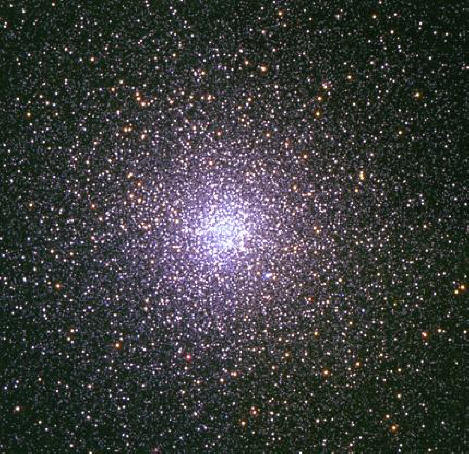|
|
How Old Are The Stars?
Jan
13, 2009
A new
technique for dating the evolution
of stars depends on knowing the age
of our own Sun.
Why do stars form where they do?
What are the conditions that cause
them to come into existence and what
makes them age? These are some of
the fundamental questions asked by
astronomers as they attempt to
understand the universe, its history
and its fate. If the stars are born
and die according to certain
measurable factors, then analyzing
those factors might help to design a
"clock" that can be used to
establish the age of any star.
Currently, according to scientists,
we can accurately determine the age
of our own Sun and no other star,
because we can study it in great
detail and ‘stardust’ from within
the solar system can be brought to
Earth and analyzed. As consensus
viewpoints state, that makes the
Sun’s age a fundamental model to
calibrate readings from other stars
and determine their ages.
Recently, NASA announced the
Kepler Mission, built to explore
extrasolar planetary systems with a
Terrestrial Planet Finder (TPF)
science package. One result that
astronomers hope to gain from Kepler
is ultraprecise brightness
measurements of nearby solar-type
stars that will enable an analysis
of lowest-order stellar
oscillations. This technique is
known as "asteroseismology," the
name derived from "helioseismology,"
or the study of wave propagation
inside the Sun. Analysis of the
oscillations are expected to reveal
the state of the core of a star,
which is the part that is thought to
change most in structure as the star
ages by fusing hydrogen into helium.
By combining this information with
other data like mass and chemical
composition, it is thought possible
to say how old the star is.
However, there is a problem. Present
understanding of stellar aging
relies on studying globular clusters
of thousands of stars in the Milky
Way. It was accepted that such stars
were formed together and share the
same composition and age. But the
Hubble Space Telescope has shown
that the stars have multiple
populations of stars with different
compositions.
Again, as the Electric Universe
model points out, astronomers are
taking a model of the Sun that has
difficulty in explaining some of the
most obvious features of the Sun and
applying it to other stars. As the
Electric Star hypothesis
reveals: "there is no reason to
attribute youth to one spectral type
over another. We conclude that a
star's location on the HR diagram
only depends on its size and the
electric current density it is
presently experiencing...its age
remains indeterminate regardless of
its mass or spectral type. This is
disquieting in the sense that we are
now confronted by the knowledge that
our own Sun's future is not as
certain as is predicted by
mainstream astronomy. We cannot know
whether the Birkeland current
presently powering our Sun will
increase or decrease, nor how long
it will be before it does so." We do
not know the age of our own Sun!
A report in Science (2 Jan 2009)
sums up, “Overall, the situation for
determining stellar ages is still
sobering, and progress has been
slow. It has reached the point where
cosmologists claim better precision
for their measurements than we can
for the ages of the nearest and
brightest stars. The challenge of
determining an accurate age for a
star therefore remains outstanding.”
Helioseismology has thrown up its
own set of unresolved problems too.
In fact, the origin of the
oscillations remains unclear. As one
astrophysicist remarked, “..the
flute does not produce music unless
one blows in it, so to speak.
Therefore one is led to the
question: who is blowing the pipe?”
The answer is simple for an
Electric Sun: The bright
photosphere is a plasma discharge
phenomenon subject to electrical
pulsations and changes in size
(another major puzzle for the
standard model of the Sun). If this
is true then helioseismology applied
to the standard model of the
interior of the Sun is worthless.
And more conundrums for researchers
are confidently predicted when
asteroseismology data is returned by
the Kepler Mission.
By Wal Thornhill
|
|
|
|
|
|
SPECIAL NOTE - **New Volumes Available:
We are pleased to announce a new
e-book series
THE UNIVERSE ELECTRIC. Available now, the first volume
of this series, titled Big Bang, summarizes the failure of modern cosmology
and offers a new electrical perspective on the cosmos. At
over 200 pages, and
designed for broadest public appeal, it combines spectacular
full-color graphics with lean and readily understandable
text.
**Then second and third volumes in the series are now available,
respectively titled Sun and Comet, they offer
the reader easy to understand explanations of how and why these bodies
exist within an Electric Universe.
High school and college students--and teachers in
numerous fields--will love these books. So will a large
audience of general readers.
Visitors to the Thunderbolts.info site have often
wondered whether they could fully appreciate the Electric
Universe without further formal education. The answer is
given by these exquisitely designed books. Readers from
virtually all backgrounds and education levels will find them
easy to comprehend, from start to finish.
For the Thunderbolts Project, this series is a milestone.
Please see for yourself by checking out the new
Thunderbolts Project website, our leading edge in
reaching new markets globally.
Please visit our
Forum
|
|
|
|
|
|
|
|







